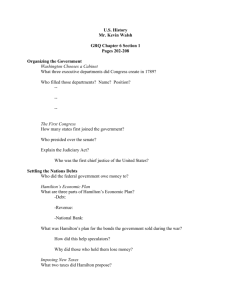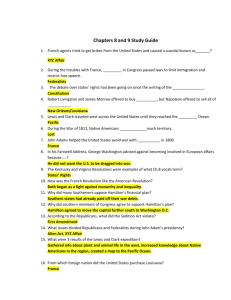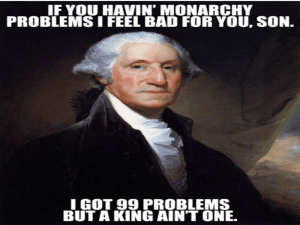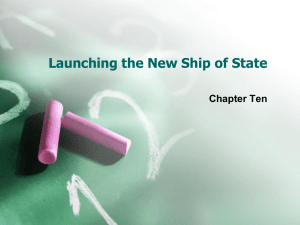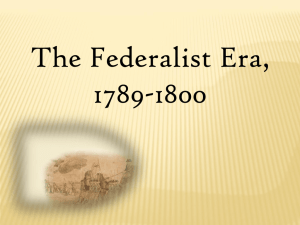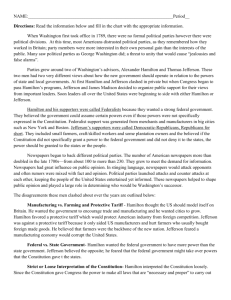The Birth of Political Parties
advertisement
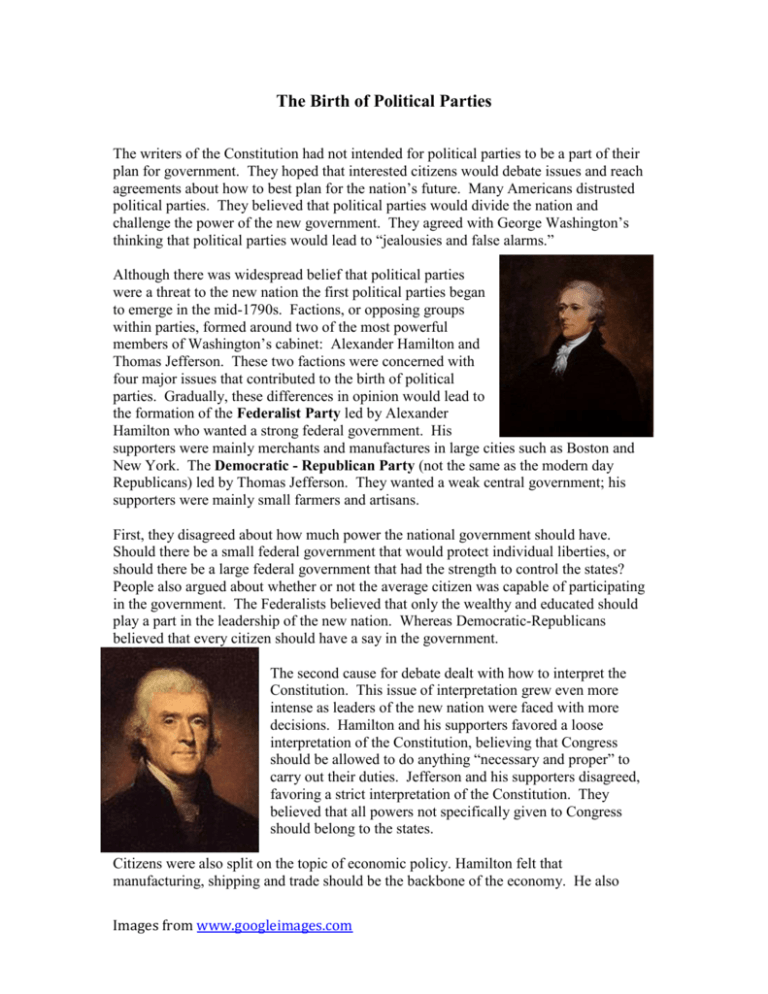
The Birth of Political Parties The writers of the Constitution had not intended for political parties to be a part of their plan for government. They hoped that interested citizens would debate issues and reach agreements about how to best plan for the nation’s future. Many Americans distrusted political parties. They believed that political parties would divide the nation and challenge the power of the new government. They agreed with George Washington’s thinking that political parties would lead to “jealousies and false alarms.” Although there was widespread belief that political parties were a threat to the new nation the first political parties began to emerge in the mid-1790s. Factions, or opposing groups within parties, formed around two of the most powerful members of Washington’s cabinet: Alexander Hamilton and Thomas Jefferson. These two factions were concerned with four major issues that contributed to the birth of political parties. Gradually, these differences in opinion would lead to the formation of the Federalist Party led by Alexander Hamilton who wanted a strong federal government. His supporters were mainly merchants and manufactures in large cities such as Boston and New York. The Democratic - Republican Party (not the same as the modern day Republicans) led by Thomas Jefferson. They wanted a weak central government; his supporters were mainly small farmers and artisans. First, they disagreed about how much power the national government should have. Should there be a small federal government that would protect individual liberties, or should there be a large federal government that had the strength to control the states? People also argued about whether or not the average citizen was capable of participating in the government. The Federalists believed that only the wealthy and educated should play a part in the leadership of the new nation. Whereas Democratic-Republicans believed that every citizen should have a say in the government. The second cause for debate dealt with how to interpret the Constitution. This issue of interpretation grew even more intense as leaders of the new nation were faced with more decisions. Hamilton and his supporters favored a loose interpretation of the Constitution, believing that Congress should be allowed to do anything “necessary and proper” to carry out their duties. Jefferson and his supporters disagreed, favoring a strict interpretation of the Constitution. They believed that all powers not specifically given to Congress should belong to the states. Citizens were also split on the topic of economic policy. Hamilton felt that manufacturing, shipping and trade should be the backbone of the economy. He also Images from www.googleimages.com believed that a bank would have the power to collect taxes so the government would be able to provide for the common defense. Hamilton believed Congress has the power to create a National Bank under the necessary and proper cause of the Constitution. Jefferson and his faction felt that agriculture should be the foundation of the nation. He believed that farmers were the most important members of society. Jefferson also did not believe Congress has the power to create a National Bank, because it is not stated in the Constitution. The two groups also disagreed on the subject of foreign policy. Those who supported Jefferson were pro-French. They supported the ideals of the French Revolution and they wanted the United States to be an ally of France. Those who supported Hamilton were pro-British. They were often members of the merchant class and wanted to trade with Britain. They believed that a close relationship with Britain would help the US economy. Political parties ended up playing a major role in the election of George Washington’s successor. In 1796, Democratic-Republicans backed Thomas Jefferson for President and Aaron Burr for Vice President. Federalists supported John Adams for President and Thomas Pinckney for Vice President. The election had an unexpected outcome. Under the Constitution, the person with the most electoral votes became president, and the person with the second most became vice president. John Adams, Federalist, was selected as president and Thomas Jefferson, DemocraticRepublican, was selected as vice president. Having the President and Vice President from opposing parties further increased political tensions. Events soon deepened the distrust between him and Jefferson. Images from www.googleimages.com



